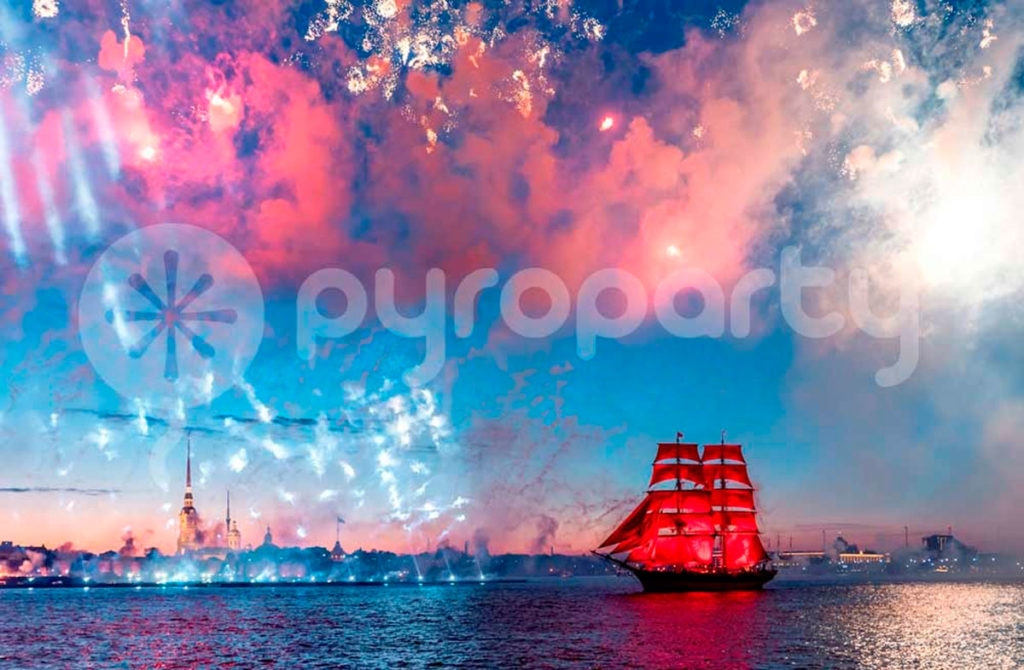Pyrotechnics and fireworks are very old. Historians date the first experiments with pyrotechnics around the year 200 BC. Almost nothing!
For this reason, pyrotechnics has many fun curiosities to learn, and you surely didn’t know. As pyrotechnics enthusiasts, in Pyroparty we are going to tell you a few secrets about it.
THE 7 CURIOSITIES ABOUT PIROTECNIA YOU LIKELY DO NOT KNOW
1. The Chinese used pyrotechnics to scare the savages
Around 200 B.C. the Chinese wrote on green bamboo, before inventing the paper. They heated it with hot coal to dry it, but something very curious happened when it was left for a long time. If the wood stayed for a while in the fire, it expanded and exploded.
It is thought that these noises greatly frightened the savages that roamed the cities of ancient China. That was the beginning of what we call “firecrackers” today.
Later, when life in China calmed down, fireworks began to be used not only to scare the savages but the evil spirits. Hence, in Chinese New Year try to “scare them” with huge amounts of fireworks. And we love it!
2. The fireworks might be invented in China, but the Italians gave it color
Everyone knows that the Chinese invented fireworks and gunpowder, but it was the Italians who, in 1830, gave it color. Two news ago if we see the whole history of pyrotechnics.
The secret was to add certain metallic elements in gunpowder, such as barium chloride for green or calcium chloride for orange.
One of the most complex colors to acquire was blue, since it required a certain composition of copper at a certain temperature. If it stayed “cold” the color did not appear, and if it got too hot, it burned.
3. Fireworks were invented before firearms, not the other way around
Many inventions of Humanity have been devised initially for military purposes. There we have Internet, canned food or sunglasses (!?). However, gunpowder, the great war revolution of Humanity, was not initially used for war purposes.
At some point in the Tang dynasty (7th-10th century), in China, the alchemists were searching for madmen as a way of being immortal. Mixing coal, saltpeter and sulfur and igniting the composition, “gunpowder” was discovered by chance.
This, in fact, had in principle playful or religious purposes. Later, as stability in China broke down, pyrotechnics began to be used as a bad idea.
4. Pyrotechnics is just a chemical reaction
A pyrotechnic device consists mainly of three elements: an oxidant, a fuel and a chemical mixture.
The oxidant (fire) breaks the molecular bonds of the fuel (gunpowder), releasing a lot of energy at once and fragmenting the chemical mixture (the component that gives it color).
This release of energy is what is called colloquially as an explosion, since it is something that occurs instantaneously and generates noise when the air particles vibrate.
5. Queen Elizabeth I of England created the figure of the Master of Fire in the kingdom
Elizabeth I of England (1558-1603) was fascinated with fireworks during the wedding of her father, Henry VIII, with her second wife. The future queen, then a girl, hallucinated so much with pyrotechnics that she became one of the first pyrofiesteras in the world. And of course the most powerful.
So much so that he decided to create the position of Master of Fire of England in the Court of his kingdom. This title would be awarded to the best pyrotechnic teacher in the whole country.
This tradition continued to such an extent that one of his successors, King James II, another pyrotechnics enthusiast, appointed his Master of Fire as a knight.
6. Sparklers burn harder than torches
Sparklers are one of the best known and loved pyrotechnic products by pyrofiesteros. What many do not know is that they burn at a very high temperature, which can be around 650 degrees. For this reason, it is recommended to wear gloves just in case.
7. How do firecrackers and fireworks “whistle”?
The characteristic whistle of many pyrotechnics products is a little known and precision science. For this phenomenon to take place, several layers of organic salt combined with potassium perchlorate are needed. This burns slower, so it causes a gas to be released in a more contained way.
Thus, the release of a gas through a small conduit, as a pitorrillo of the express pot. Amazing, right?

